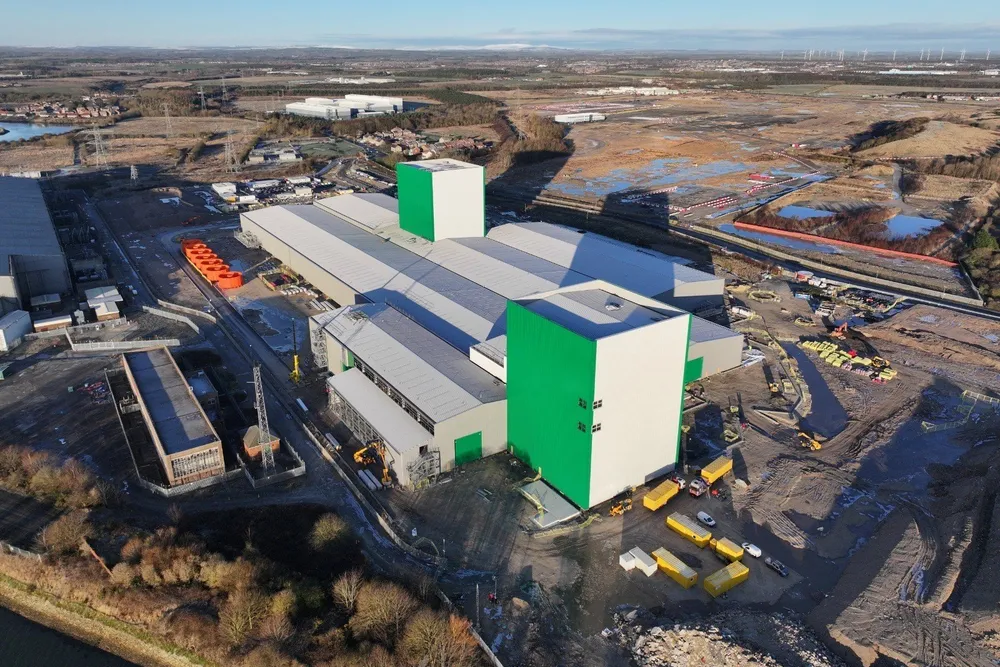Offshore wind supply chain waits to see what is left 'under the bonnet' after UK spending review
It's been a long wait, but will the UK's industrial strategy live up to expectations when it comes to offshore wind?

The UK's offshore wind supply chain is about to find out if a long-awaited industrial strategy will still live up to its billing after the government announced massive spending increases for defence, nuclear power, house-building, energy efficiency and the national health service.
The UK government has been working on a new industrial strategy since taking office almost a year ago promising, among other things, a major pivot toward clean energy industries, including funding initiatives for targeted segments of the supply chain for offshore wind.
The industrial strategy launch, which was initially expected in March, has now been delayed until the final week of June.
The decision to delay was taken amid mounting pressure on the government to find a way to reduce the exceptionally high electricity prices faced by energy-intensive businesses in the UK, and it was taken on the eve of a major government budget review.
Spending increases announced by chancellor Rachel Reeves on Wednesday have raised concerns about whether the government, under pressure from the Treasury, may be forced to scale back ambitions for parts of its industrial strategy.
These concerns have been amplified by reports suggesting the industrial strategy has become increasingly focused on lowering electricity costs for energy intensive businesses.
The spending review confirmed plans to borrow £113bn ($153bn) to fund capital-intensive projects.
Nuclear power was one of the winners, with £14.2bn earmarked for the Sizewell C power station and Rolls Royce selected to build the country's first small modular reactors under a broader £2.5bn programme, but the offshore wind sector will have to wait a week or two to see what is left in the kitty.
The UK government will first announce a long term infrastructure plan, probably next week, with developing or upgrading port facilities for floating offshore wind projects likely to feature there.
Growth areas for offshore wind
The industrial strategy, expected one week later, is expected to provide funding for selected "growth areas", including parts of the offshore wind supply chain such as subsea cables and turbine blades and turbine towers as well as industrialised foundations and substructures.
Grants and other forms of public funding will be channelled, to some extent, through the Offshore Wind Growth Partnership, another industry body.
The aim is to focus on segments offering potential to build globally competitive industries, while bringing jobs and skills to areas of industrial decline.
Reeves admitted to an increasing focus on the high electricity costs faced by businesses in the UK when she said the government is looking at how to make electricity more affordable for them.
"That is a question we need to answer in the industrial strategy in a few weeks' time,” she stated last week.
But in the spending review, Reeves also defied calls for cuts to a £13.2bn scheme designed to help to cut household bills through a mixture of energy efficiency measures, heat pumps, solar panels and batteries.
"This appears to be government putting money where its mouth is," commented Jess Ralston, an analyst with the Energy and Climate Intelligence Unit think-tank.
"For industry, the picture remains unclear, with all eyes now on the upcoming industrial strategy."
Zonal groan
Providing cheaper electricity for intensive consumers is also at the heart of the debate about a proposed switch to pricing zones in the UK.
Supporters say energy-intensive businesses, including manufacturing and data centres, would be drawn to regions closer to the big offshore wind resources, such as some coastal regions of Scotland, due to cheaper electricity and an absence of industries.
But developers and lobby group RenewableUK have pleaded with the government not to introduce such a radical change at the very moment the UK is trying to allocate record levels of offshore wind capacity and virtually remove fossil fuels from the grid by 2030.
The UK’s seventh allocation round for renewables capacity is currently in process, and analysts reckon AR7 and next years AR8 will have to deliver at least 14GW, but ideally closer to 22GW, to keep the CP30 targets in sight.
Introducing a locational pricing scheme could disrupt these tenders, critics say, by introducing uncertainty on the application of grandfathering criteria and new risks on volume and price.
“It's hard to see how the government could succeed in delivering clean power by 2030 whilst also introducing this complex and controversial scheme,” commented Jane Cooper, Deputy CEO of RenewableUK, earlier this year.
'I worry the Treasury doesn't have enough under the hood'
The industrial strategy is also expected to address the pressing problem of skill shortages.
Training and retraining initiatives have already sprung up as part of the UK’s efforts to lean into the energy transition, with the involvement of entities such as Offshore Energy UK, Offshore Wind Scotland and Renewable UK.
John MacAskill, director of renewables consultancy firm OWC, said he hoped the industrial strategy would fulfil its promise to adopt a more overarching approach to the challenges facing the industry.
"You can have lots of little schemes, but you need to link them with actual job placements," he commented.
"You need to have the jobs that pull people through the scheme and the money to train that volume of people. It needs that kind of real linkage.
"I just worry that it's easy pickings for the Treasury. And also that it under the hood, it doesn't have the scale for what is needed," he said.
(Copyright)